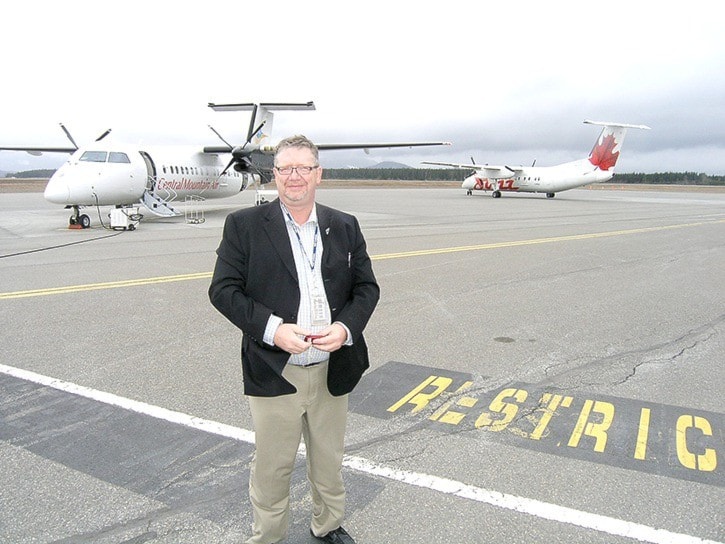Northwest Regional Airport manager Carman Hendry's index finger runs along a series of red-coloured building shapes imposed upon a site map of the far eastern end of Bristol Road.
"We have people interested in this parcel, in that parcel and in this parcel," he says.
The location is past the Hawkair complex, past the new hangar just completed by Canadian Helicopters and just past the Executive Flight Centre building.
Should the liquefied natural gas (LNG) industry even fulfill a portion of the speculation boom now underway in the region, this is going to be the wellspring of a new kind of venture at the airport.
That's because those red-coloured building shapes will be transformed into actual structures, built by the companies that will be arriving to service the various aspects of natural gas pipelines and LNG plant construction and, eventually, operation.
Specifically, they'll be passenger terminals operated for the thousands of workers arriving and departing on non-commercial flights who are connected to the LNG construction activities.
"They'll be built by those companies under lease agreements with us so that when they leave, we will own the buildings," said Hendry.
The purpose-built terminal buildings will be self-contained with their own water and sewer systems.
The Northwest Regional Airport will even have a say in the design of the structures so that when the day comes when the buildings are no longer needed by LNG companies, they can be converted to other uses by the not-for-profit airport society.
Having resource-based companies build their own airport facilities is a concept practised elsewhere by airports in regions undergoing rapid growth.
It's a prudent way of dealing with rapid air passenger growth and the subsequent demands placed upon smaller airports to provide facilities to handle that growth.
The foundation, says Hendry, is that resource companies absorb the risk, freeing the airport society of any long-term debt to build facilities to cope with construction booms which will taper off when work concludes.
"We will not be putting the airport into the position of over-building," Hendry adds.
"The [airport society] directors have decided that it will be industry taking on their own risk."
And by having resource companies building their own facilities to meet their own demand based on their own final investment decisions, the Northwest Regional Airport won't be caught short.
"We've heard stories of Fort McMurray, Fort St. John and Fort Nelson not having the infrastructure," said Hendry of how rapid growth based on resource development has outstripped the capabilities of smaller airports elsewhere.
The Northwest Regional Airport will additionally benefit from resource sector terminal construction by charging passenger arrival and departure fees in the same manner as it now charges regular commercial flights.
In a way, said Hendry, these resource company-based passenger terminals will result in the creation of two airports – the terminals themselves and the regular terminal at the airport which will continue to handle regular traffic.
To the largest extent possible, the resource terminal operations will be kept separate from the main regular passenger terminal.
“Sometimes it’s difficult to have workers from a boom in the same place as the community,” said Hendry.
The “two airports in one” model is contained within the Northwest Regional Airport’s 20-year master plan released in January.
The conservative nature of the approach to the possibility of an LNG industry in the region is reflected in the plan’s pages, says Hendry.
“Forecasts are just guesses. We wanted something we could use but which could be adapted as conditions change and evolve,” he said.
The 20-year plan, prepared by the international aviation services consulting firm Airbiz, also contains recommendations for more immediate work, preparations for which, Hendry said, are already underway.
That list includes expanding the long term parking lot and rebuilding the eastern arm of Bristol Road.
